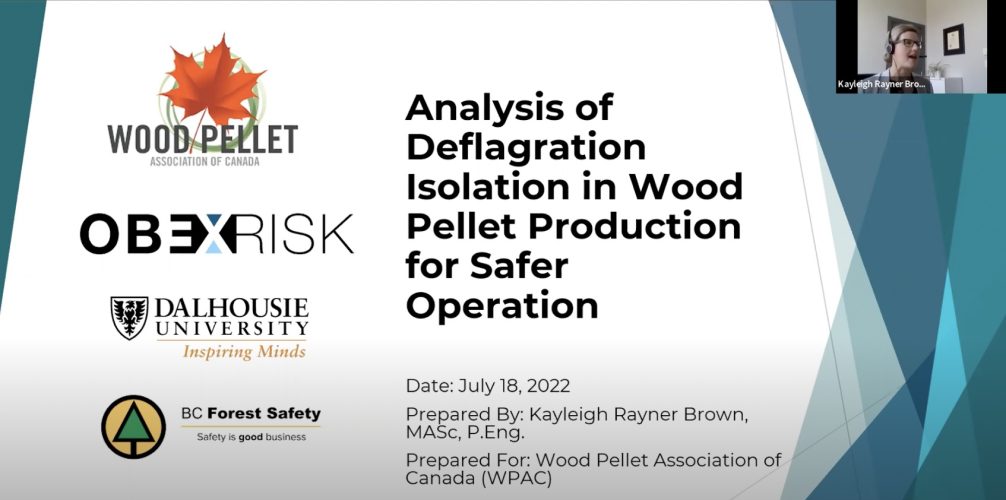On Monday, the Wood Pellet Association of Canada (WPAC) in collaboration with Dalhousie University, BC Forest Safety Council and Canadian Biomass magazine hosted a webinar. Organized by the WPAC Safety Committee, the focus of the webinar was the technical study Analysis of Deflagration Isolation in Wood Pellet Production for Safer Operation. The project was completed by Kayleigh Rayner Brown, P.Eng., director of Obex Risk Ltd., and involved extensive contributions from WPAC producers, engineering consultants and safety experts, as well as independent research and development. Funding for the project was provided by Dalhousie University, arranged by Dr. Paul Amyotte.
In wood pellet plants, there is a risk of combustible dust deflagration propagation through interconnected equipment due to presence of ignition sources and generation of combustible dust.
Deflagration isolation is the technique for interrupting pressure and flames between connected equipment. The purpose of the webinar was to enhance the ability of management and decision makers to effectively consider key areas of focus for deflagration isolation in wood pellet production.
The webinar began with a welcome from Gordon Murray, Executive Director of WPAC, and highlighted that this project is a work product of the safety committee’s annual workplan. Mike Tasker, WorkSafeBC occupational safety officer, was invited to provide opening remarks, as the topic of deflagration isolation was first brought to the attention of WPAC in 2021 by the WorkSafeBC Process Safety Team. Mike highlighted that an increased focus on deflagration isolation has led to a reduction in severity of incidents. He also highlighted that this initiative demonstrated the responsiveness of the wood pellet industry to collaborate with stakeholders and work together to reduce risk.
WPAC has resources on deflagration isolation available, including:
- Full webinar recording on the BC Forest Safety Council YouTube channel
- Full Technical Report
- Deflagration Isolation Overview Factsheet
- Deflagration Isolation Factsheet for Operators
Kayleigh Rayner Brown, P.Eng. is the director of Obex Risk Ltd.
This article was originally published by Canadian Biomass, a national media brand providing coverage of the emerging biomass, bioenergy and bio-products markets. See CanadianBiomassMagazine.ca for more information.

